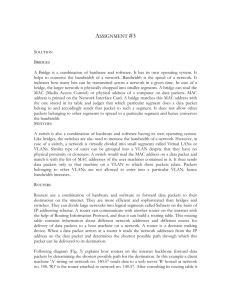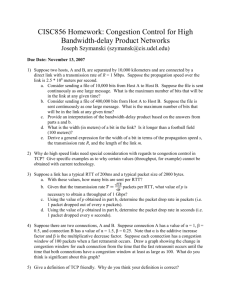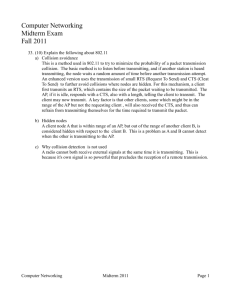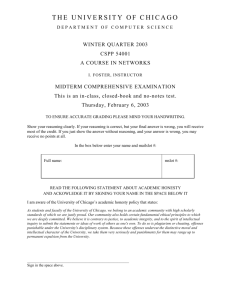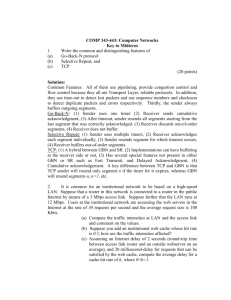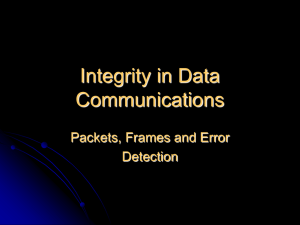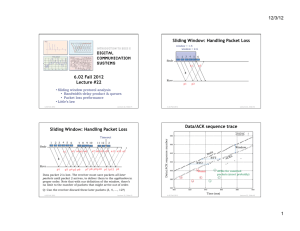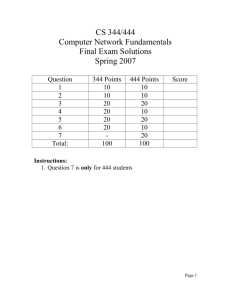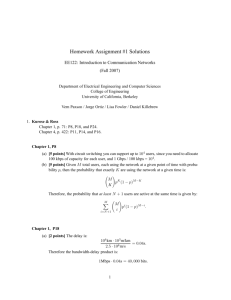Sliding Window & TCP Protocol Exam Questions
advertisement
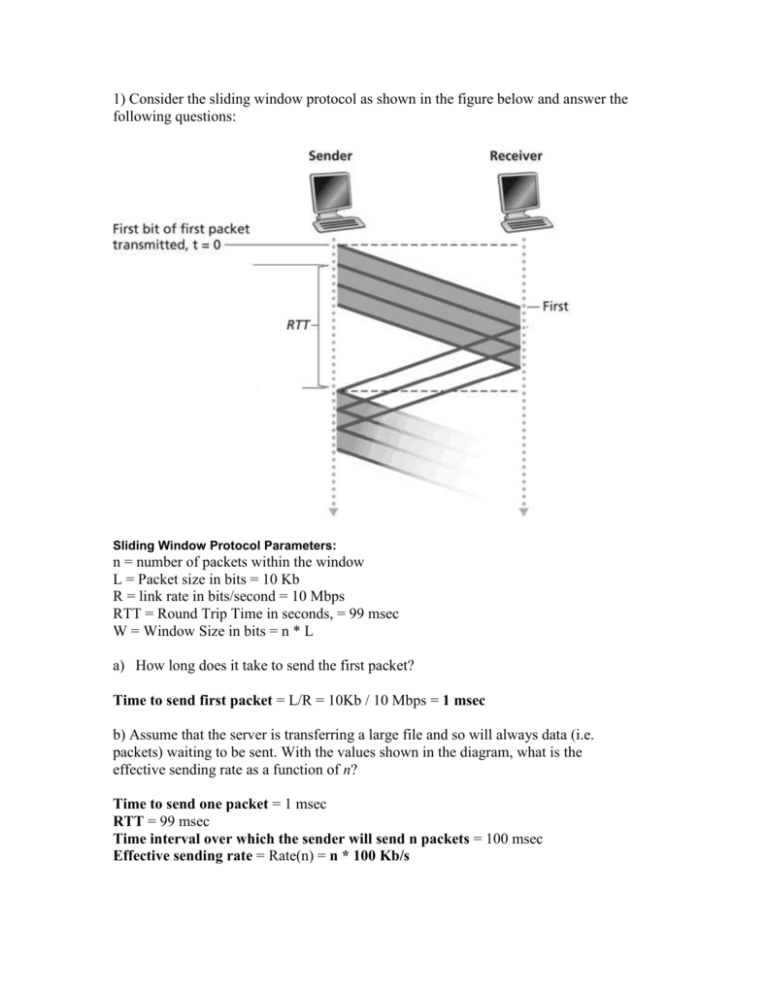
1) Consider the sliding window protocol as shown in the figure below and answer the following questions: Sliding Window Protocol Parameters: n = number of packets within the window L = Packet size in bits = 10 Kb R = link rate in bits/second = 10 Mbps RTT = Round Trip Time in seconds, = 99 msec W = Window Size in bits = n * L a) How long does it take to send the first packet? Time to send first packet = L/R = 10Kb / 10 Mbps = 1 msec b) Assume that the server is transferring a large file and so will always data (i.e. packets) waiting to be sent. With the values shown in the diagram, what is the effective sending rate as a function of n? Time to send one packet = 1 msec RTT = 99 msec Time interval over which the sender will send n packets = 100 msec Effective sending rate = Rate(n) = n * 100 Kb/s c) For an effective rate of 1 Mbps, how many packets must be sent within one window (i.e. what value of n is required)? Sender must send n = 10 d) Using a round trip delay value of 100msec, what is the Bandwidth-Delay product for this problem, how many packets can be in transit and what is the link utilization when we set n to this value? Bandwidth-Delay Product = 100msec * 10 Mb/s = 1 Mb Max packets that can be in transit = 1 Mb / 10 Kb = 100 Packets Link utilization = 100 * 100 Kbps / 10 Mbps = 100% 2) In the figure below, host A is transferring a large file to host B using the TCP protocol. The TCP MSS (S) is set equal to the link layer MTU of 1500 Bytes (1.5KB or 12Kb). There are 4 packet switches labeled SW1 – SW4 and five links labeled L1 – L5 with their corresponding rates labeled as R1 – R5. S = Segment/packet length in bits (12Kb) Ln = Link n Assume that the round trip delay (RTT) for a minimum sized packet is 100 msec. Assume that you are transferring an endless stream of TCP segments (i.e. packets) from host A to host B. Suppose that whenever we send 512 TCP segments back-to-back (i.e. one after the other within one round) a segment is lost – this could be due to limited buffer space. Further, suppose that we learn of the loss event by the receipt of 3 duplicate acknowledgments at the beginning of the next round. Note, that we send a complete window, then wait for the start of the next “round” before realizing that a loss event has occurred. Assume that the advertised receive window is not a factor. a) Starting at time = 0 (i.e. round 1), in what round will the first loss event occur? Set 2N-1 = 512 => N – 1 = 9 or N = 10. So, in round 10 we send 512 segments. At the end of this round (or, equivalently at the beginning of the 11th round but the actual loss is in the 10th) we detect the loss. b) What is the effective sending rate within this round? c) What will the widow size be after the loss is detected (give the window size as the number of segments that can be sent, not a byte total)? One half the size when the loss was detected. Assuming the loss is detected at the end of round 10 when the window size is 512 segments, the new congestion window is 256 segments. d) How long did it take the sender to complete the first N rounds (assuming N is the round when the loss is detected)? Time to complete the first 10 rounds is approximated by 10 * RTT = 1 second, since RTT >> S/R. e) After detecting the loss, how long does it take to detect another loss event? The first loss event was detected after slow start, so we expect this to be relatively fast. Since all loss events are detected by the receipt of a triple duplicate acknowledgement (i.e. fast retransmit), the congestion window is always cut in half. Then we enter congestion avoidance where the window is increased by 1 each round. So, starting at cwnd = 256, we must have another 256 rounds to reach cwnd = 512. Time to subsequent loss event = 256 * 100ms = 25.6 seconds f) What is the average sending rate assuming that we always detect a loss event as described above? Assume the connection is long-lived. After the initial slow start period, the per round sending rate varies between Min rate = 256 * 12Kb / 100 ms = 30.72Mbps Max rate = 512 * 12Kb / 100 ms = 2 * Min = 61.44Mbps Average Rate = Min + (Max – Min)/2 = Min + (2*Min – Min)/2 = (3/2)*Min or 1.5*Min Average Rate = 46.08Mbps g) If the network never lost a TCP segment, then what would the receiver have to advertise for a receive window (rwnd) size, in Bytes, to obtain an average rate of 80Mbps? 80Mbps = rwnd / 100msec, or rwnd = 8 Mb. So for a receive window rwnd = 1 MB we will realize an average sending rate of 80Mbps.
